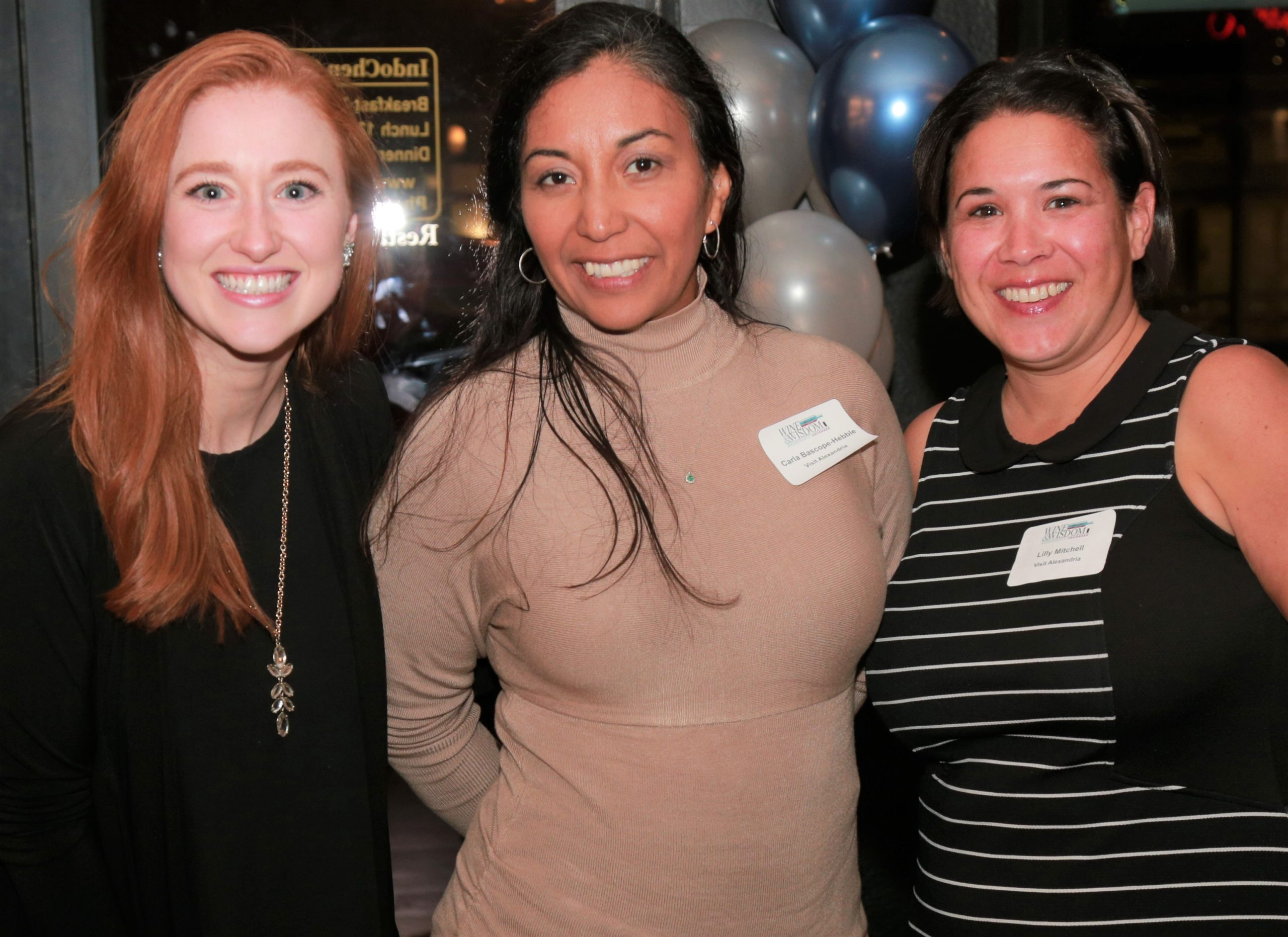In the ever-evolving world of meeting and event planning, it’s easy to get caught up in a flurry of industry trends while also keeping in mind one basic truth: Attendees make an event; if you don’t have attendees, you don’t have an event. Thankfully, the Zoom boom is over, and live events are back in full swing.
As you dive into full-on event planning mode, it’s crucial to consider the current thinking and behavior of your attendees. How do you increase loyalty while capturing the new wave of younger event goers? Have you re-evaluated your organization’s purpose, or “why,” and considered whether it still aligns with the events you’re producing?
At Visit Alexandria’s annual “Breakfast and Blossoms” spring event—held for the first time at Freeman, a global leader in full-service events management with a waterfront venue in Old Town Alexandria—meeting planners gathered to hear from two local marketing experts on what it means to define your “why,” and how to adapt it to the latest data-driven trends impacting meeting and event attendee behavior in 2023. Read on for their key insights.
Speakers:
- Kimberly Hardcastle-Geddes, CEM, president of mdg, a Freeman company that specializes in event marketing strategy and audience acquisition for live and online events
- Shay Onorio, president and owner of Red Thinking, a woman-owned, multi-faceted creative agency with expertise in brand strategy
1. Put 2019 in the Rearview Mirror–and Keep It There
While nothing has shaken the events and meetings world to its core as forcibly as the pandemic, it’s time to quit defaulting to the way things were pre-pandemic. “We’re not going back to 2019,” said Hardcastle-Geddes, who has 18 years of event marketing experience and a solid track record of predicting attendee behavior based on data-driven insights.
While it’s been the norm to default to 2019 when creating benchmarks, toss the recycled formats, event content, floorplans and pre-inflation budgets, and take a hard look at what’s driving attendee behavior right now. (Spoiler alert: “Business casual” is on its way out.)
2. Today’s Attendee Behavior: The Proof is in the Data
Remember when we said that without attendees, there is no event? Still true. However, rather than fixating on the number of RSVPs as a metric of success, focus your energy on understanding who today’s audience is—chances are, it’s younger, more diverse and on Tik Tok. “There are so few Gen Xers, what’s happening is the baton is going straight from the boomers to millennials,” said Hardcastle-Geddes. “And the two generations are very, very different.”
According to her research, in less than five years, 44% of event goers will come from a new, hybrid generation dubbed “Next Gen,” a combination of millennials and Gen Zers between the ages of 20 and 44. This finding is at the core of the Freeman Trends Report for Q1 of 2023, which offers the largest and most comprehensive behavioral assessment of B2B events in the industry, and introduces us to the “Next Gen Event Goer” (NGEG).
The generational shift from boomers to Next Gen will have major ramifications on the events industry, from expectations on what counts as a personalized experience to the clothes attendees wear (the NGEG is truly not a fan of business casual). Specifically, the NGEG is looking for events that:
- Demonstrate a clear value proposition that aligns with their work/life priorities.
- Create opportunities for professional growth.
- Offer greater connection to their colleagues and industry.
- Provide more hands-on learning experiences.
As attendees (and planners) inevitably continue to get younger, it’s crucial not to ignore the insights in this report when working toward post-COVID event recovery, especially when seeking buy-in from internal decision makers and stakeholders. Above all, the report highlights the very real fact that the NGEG will not respond to a one-size-fits-all events strategy. “The future of tradeshow and event attendee behavior depends on Gen Z and millennials,” added Hardcastle-Geddes. “Adapt to stay relevant.”
3. Beyond the Data: Defining Your Event’s “Why”
When it comes to attracting attendees, nothing is more important than defining the purpose or goal of your event—what Onorio calls, the “why.” She defines it as a powerful lens that will help you make the best decisions for building your event with clarity and confidence, from operations to customer experience to marketing to what speakers to invite. Before you dive into what color of linens to choose, think back to what originally inspired you.
“Like any brand and the loyalties that come along with it, folks may wonder why they attend this event every year, other than, ‘I always have,’” she said. “Give me a reason why I should attend your event, or I will give you a reason why I should not.”
Defining your event’s “why” is especially crucial for today’s attendees. The meetings and events that were delayed during the pandemic have created an everything-happening-all-at-once feeling, meaning that event goers of all ages are forced to become more strategic with how, when and where they spend the most precious of nonrenewable resources: their time.
So, before you select a venue, a date or a caterer, sit down with your team and carve out the purpose behind your event. What are you bringing to the table that attendees won’t find anywhere else? What are the key takeaways you hope they share with their boards? Flip the script and consider what you expect to hear from your own employees when they return from conferences. Chances are, no one remembers the linens.
Insider Tip: Visit Alexandria is a destination marketing organization that offers customized services to help you draw in participants and create a successful event.









